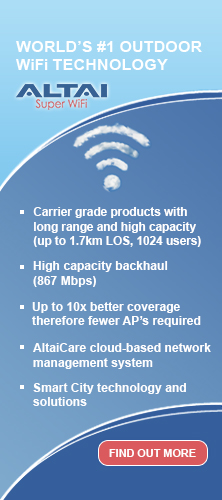
Mobile Data Speeds In Australia
When referring to mobile data speed there are a number of terms that are used to describe the technology:
| 2G |
Downlink Speed
|
Uplink Speed
|
Comment |
| CSD (circuit switched data) |
9.6 Kbps
|
used for telemetry applications | |
| GPRS (general packet radio service) |
114 Kbps
|
||
| EDGE (Enhanced Data rates for GSM Evolution) |
237 Kbps
|
||
| 3G | |||
| UMTS Data |
384 Kbps
|
||
| HSDPA (High-Speed Downlink Packet Access) |
7.2 Mbps
|
384 Kbps
|
|
| HSUPA (High-Speed Uplink Packet Access) |
14.4 Mbps
|
5.76 Mbps
|
|
| HSPA+ |
21 Mbps
|
5.76 Mbps
|
|
| DC-HSPA (Dual Channel / Dual Carrier HSPA) |
42 Mbps |
22 Mbps
|
|
| 4G | |||
| LTE (Long Term Evolution) |
100 Mbps
|
50 Mbps
|
|
| LTE Advanced Cat4 |
150 Mbps
|
50 Mbps
|
1 x 20MHz Band |
| LTE Advanced Cat6 |
300 Mbps
|
50 Mbps
|
2 x Bands (carrier aggregation) |
| LTE Advanced Cat9 |
450 Mbps
|
75 Mbps
|
3 x Bands (carrier aggregation) |
| LTE Advanced Cat11/12/13 |
600 Mbps
|
150 Mbps
|
4 x Bands (carrier aggregation) |
| LTE Advanced Cat15 |
1 Gbps
|
500 Mbps
|
5 x Bands or 100MHz of bandwidth (carrier aggregation) |
*The above information is based on the typical speeds used by module manufacturers in mobile devices and also carrier network speeds. It may not be the maximum speed achievable by each data protocol.
What Determines Mobile Data Speeds
The internet speed you experience on a mobile network is determined by several factors:
The Mobile Network
– The data speed of the base station – HSPA, HSPA+, LTE etc.
– The capacity of the base station – how many users it can handle at a time.
– The backhaul capabilities of the base station – the connection speed between the tower and the network.
– The amount of frequency channel bandwidth the carrier is using. The wider the channel bandwidth, the wider the pipe is to send data. Standard channel bandwidths used by the carriers in Australia are 10 MHz, 15 MHz or 20MHz of bandwidth for 4G.
– If using LTE Advanced, the number of bands the carrier is utilising for carrier aggregation This could be 2, 3 or 4 different bands or pipes being used simultaneously to send/receive data.
The Environment
– The terrain between the user and the base station – trees, buildings, water, hills can degrade the signal.
– Weather conditions – rain, wind, snow can degrade the signal.
Users
– Amount of devices connected to the base station at one time – the greater the number using internet the slower the data speed.
– The distance between the base station and the user – the further the distance the slower the speed can be.
– Signal level on the users device – the lower the signal the slower the speed can be
– Signal quality received by the users device – the lower the quality of the signal the slower the speed can be
User Hardware
– The mobile device being used – data speeds supported, amplifier power, MIMO antenna support
– The antenna system being used, MIMO antennas
